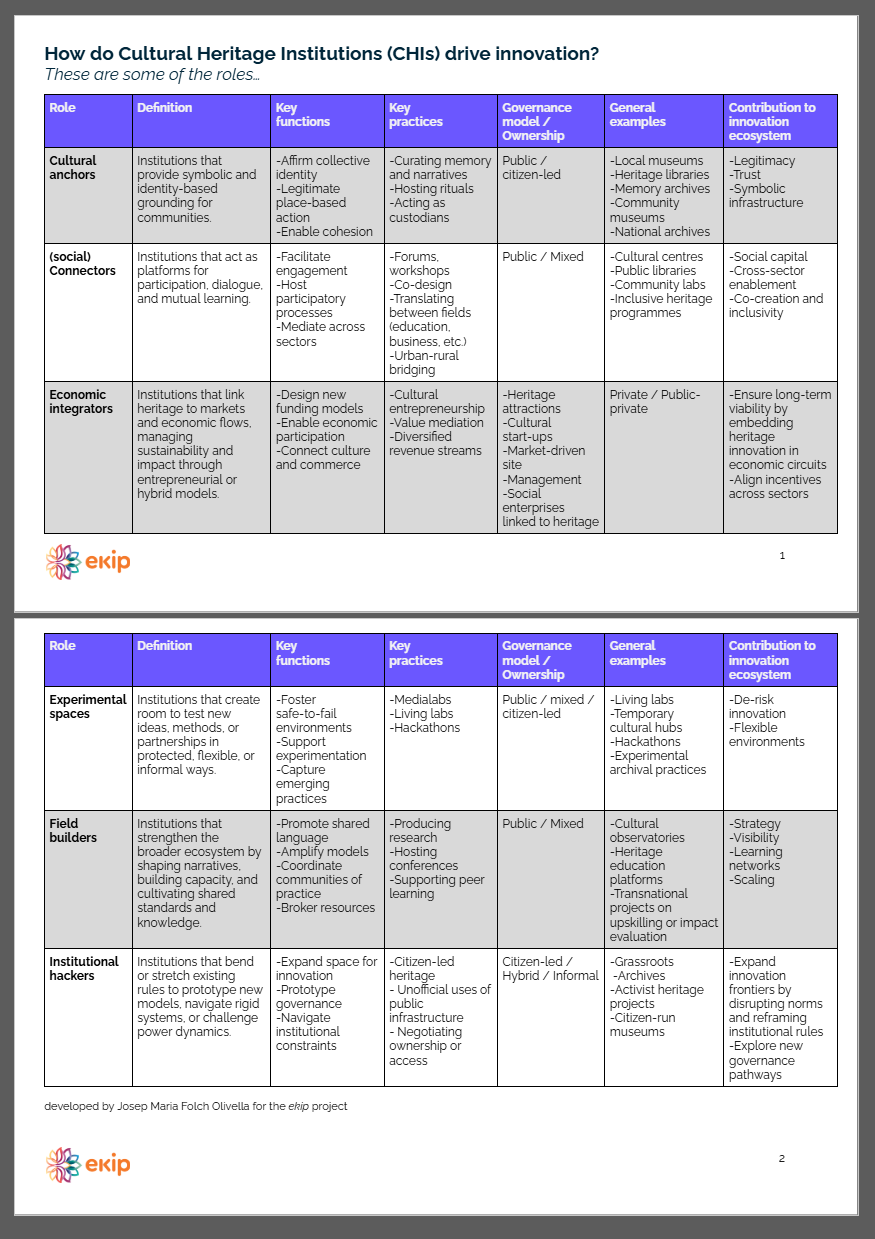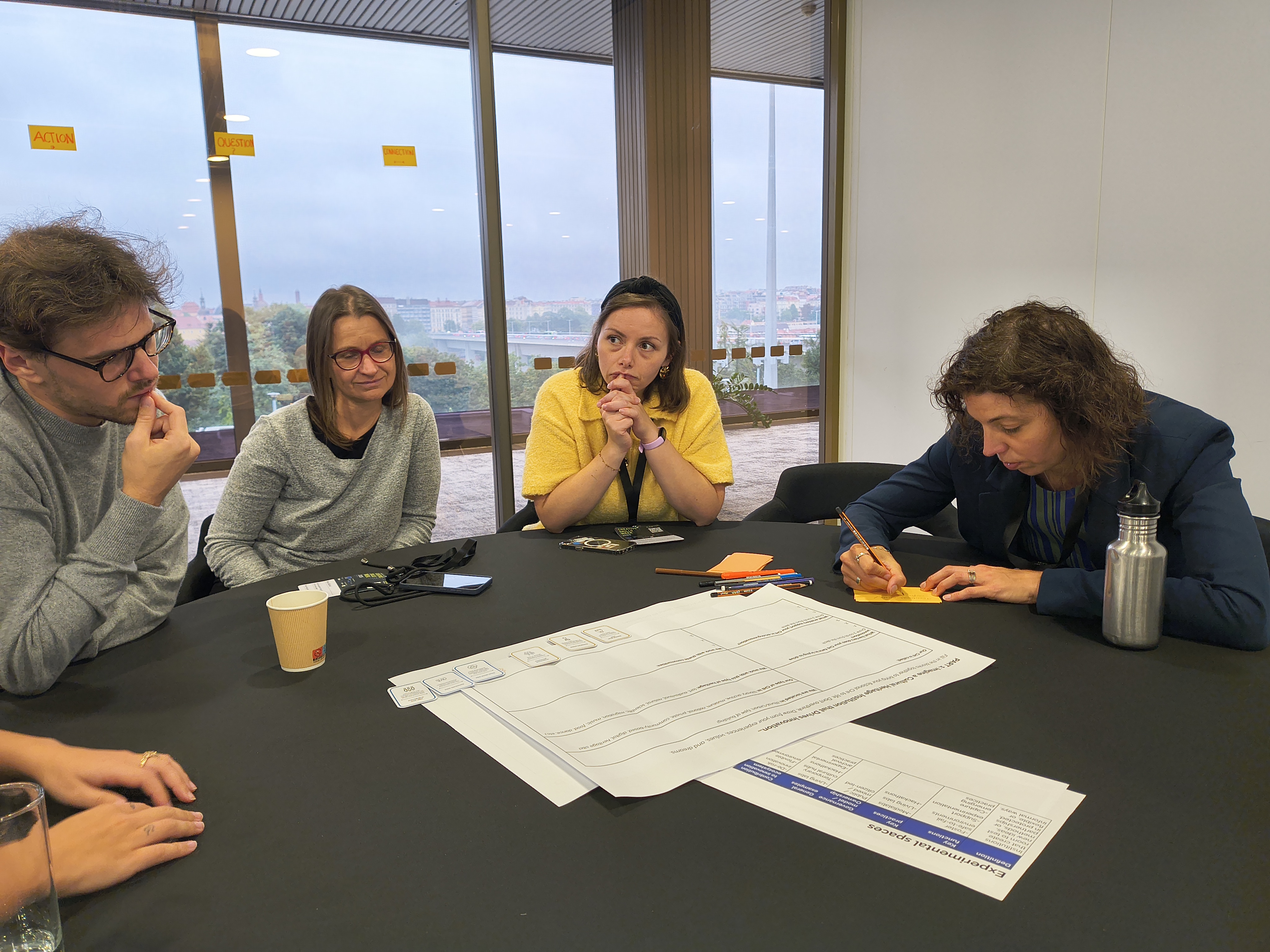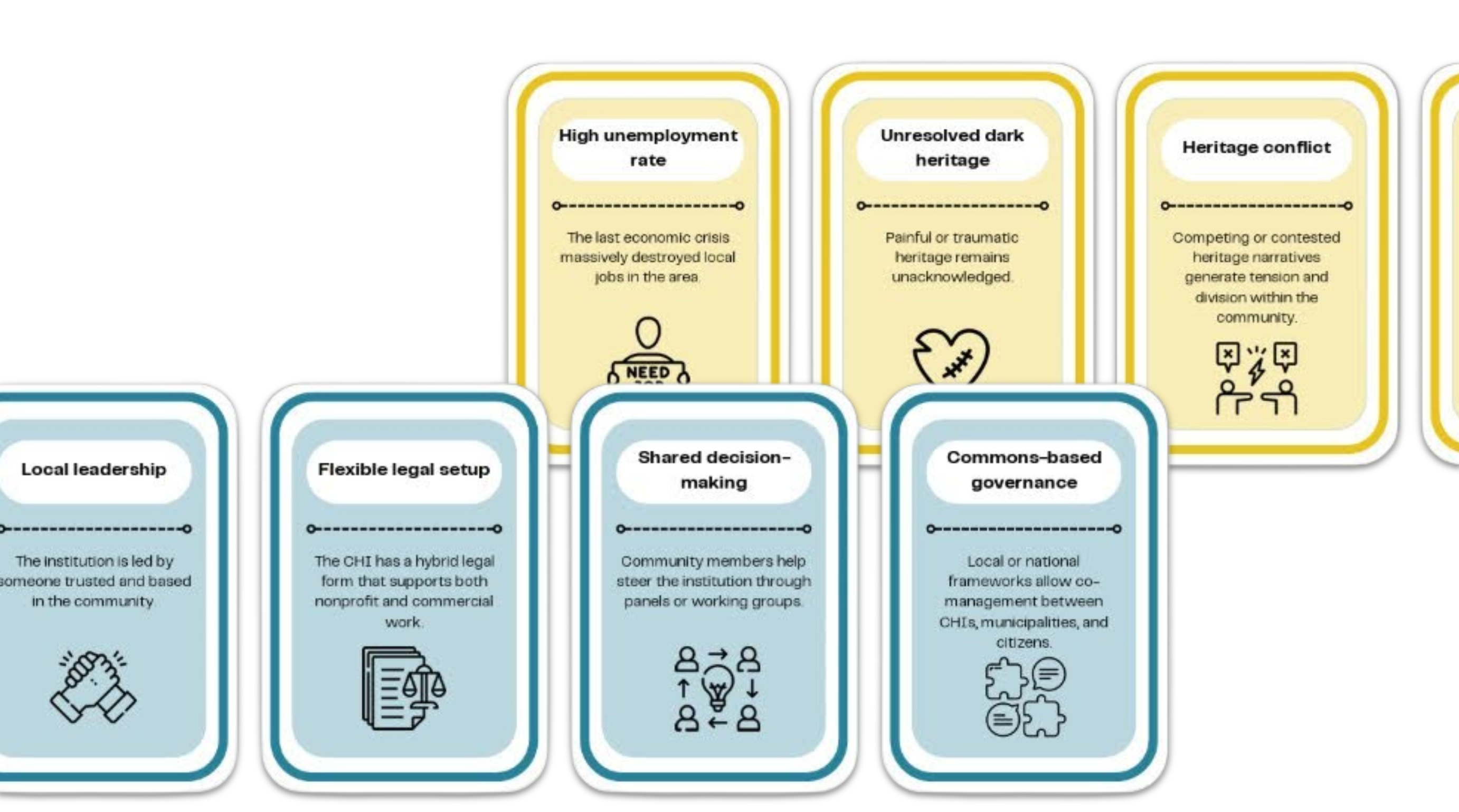Typology of roles for Cultural Heritage Institutions in Innovation Ecosystems
This typology outlines the diverse roles that Cultural Heritage Institutions (CHIs) play in Europe’s innovation ecosystems. It offers a framework to recognise how CHIs contribute to innovation through cultural, social and experimental practices, helping policymakers and practitioners better understand and support their impact.

-
Author
- Josep Maria Folch Olivella, ekip (2025)
-
Audience
-
Geographical scope
-
Resource type
Cultural Heritage Institutions (CHIs) are increasingly recognised as important actors in Europe’s open innovation ecosystems. Traditionally seen as custodians of the past, CHIs are now expected to contribute to social cohesion, sustainability and democratic renewal. They bring trusted, place-based infrastructures and long-term cultural knowledge that can strengthen innovation capacity across sectors.
Yet their potential remains under-recognised in dominant innovation policies, which often prioritise speed, scale and product-based innovations. In practice, innovation in CHIs unfolds as slow, relational and context-specific processes driven by care, community engagement and co-design. Misalignments between policy frameworks and practice combined with funding precarity, rigid governance and unsuitable evaluation metrics constrain their ability to innovate.
The Typology of Roles for Cultural Heritage Institutions in Innovation Ecosystems has been developed as a resource to make these contributions more visible and better understood. It outlines the diverse ways in which CHIs participate in and shape innovation from acting as cultural anchors that ground communities and collective identities, to serving as connectors, economic integrators, experimental spaces, field builders and institutional hackers.

Note: A future updated version of this will be published at the end of 2025.





